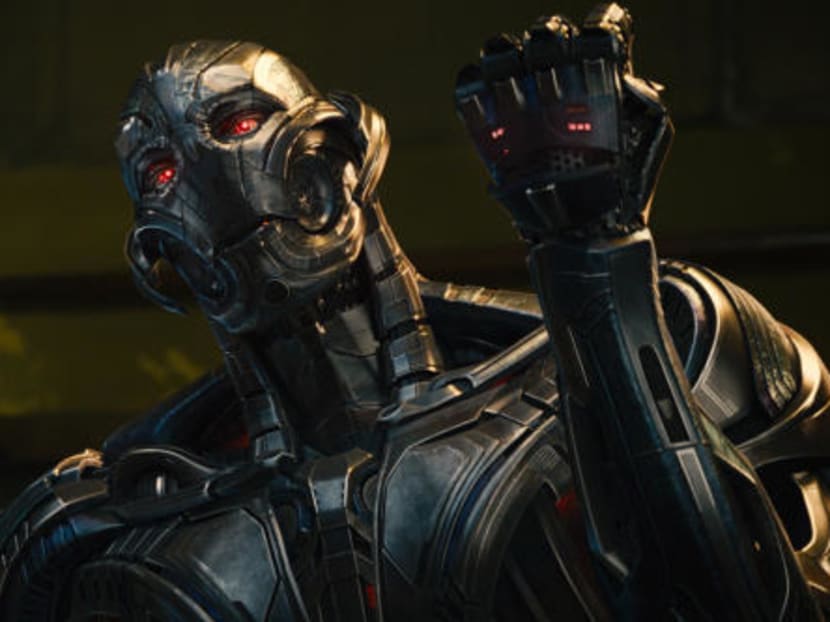Avengers and the age of CGI overkill in Hollywood
LOS ANGELES – In the bad old days of Whiz! Bam! Pow! TV-and-movie superheroes – which yielded cut-rate, campy artifacts like those Captain America TV movies or Roger Corman’s unreleased version of Fantastic Four – a massive spectacle like Avengers: Age of Ultron seemed unimaginable. Yet the technology that has made such blockbusters feasible has, creatively, become a curse as well as a blessing.

A scene from Avengers: Age of Ultron. Photo: AP
LOS ANGELES – In the bad old days of Whiz! Bam! Pow! TV-and-movie superheroes – which yielded cut-rate, campy artifacts like those Captain America TV movies or Roger Corman’s unreleased version of Fantastic Four – a massive spectacle like Avengers: Age of Ultron seemed unimaginable. Yet the technology that has made such blockbusters feasible has, creatively, become a curse as well as a blessing.
Computer-generated imagery, or CGI, makes all things possible. While the 1978 Superman used the memorable slogan, “You will believe a man can fly,” that claim has never been truer than it is now.
The ability to mount enormous battles featuring multiple super-powered characters, however, has become its own trap. And while the results can be visually - astounding, the movies regularly feel as lifeless and mechanised as the technology responsible for bringing those visions to fruition.
The why of it remains something of a mystery, but the outcome is frequently a hugely expensive – if often enough quite lucrative – tentpole release that certainly puts the money onscreen, yet nevertheless proves more numbing than exciting, even during what should be the show-stopping sequences.
The original Avengers was mostly a happy exception, even with its prolonged alien-invasion climax. Age of Ultron, while ambitious in exploring relationships among characters, becomes drearily repetitive as the heroes mow down another CGI horde, this time consisting of artificially intelligent robots.
Granted, these movies are popular targets, and it’s easy for midnight-screening types to dismiss such criticism – as evidenced by the tone of the reviews in the Los Angeles Times and New York Times – as the lament of a stodgy curmudgeon who worships at the footage of Citizen Kane. However, as one who collected comicbooks and endured one disappointment after another seeing beloved heroes brought to the screen, this critic rejoiced as Tim Burton’s Batman and Bryan Singer’s X-Men helped usher in the current golden age – quite literally, based on the subsequent trail of record-breaking opening weekends.
Notably, a TV series like The Flash, operating on a smaller budget, can’t match theatrical action setpieces and must exhibit greater ingenuity. On the flip side of the coin, watching two Kryptonians go toe to toe in Man of Steel, destroying much of Metropolis in the process, became a bruising ordeal for viewers, too, despite how good the scene looked compared with the confrontation three decades earlier with Zod and his sidekicks in Superman 2.
The pattern has become predictable. Iron Man, a terrific movie overall – particularly in capturing the origin story – degenerated into a mundane brawl between two armour-clad characters. Ditto the Hulk reboot with Edward Norton, which culminated with the title character’s ho-hum showdown with another green behemoth, the Abomination.
One can argue, in fact, that the much-maligned second Star Wars trilogy sacrificed an element of its humanity in George Lucas’ embrace of a wholly digital filmmaking approach. At a certain point, watching droid armies being whacked to pieces begins to yield diminishing returns.
Put more simply, just because CGI wizardry allows you to do something, whether hoisting an entire city into the air or leveling skyscrapers willy-nilly, doesn’t always mean you should. Because while the box office figures might suggest otherwise, there is an audience out there that’s weary of these movies precisely because of the hollow quality to the inevitable final 30 minutes of unrelenting mayhem.
For fans, the first emotion in seeing comicbooks taken seriously has no doubt been something approaching gratitude. After all the cinematic indignities the genre experienced, it’s been thrilling for Hollywood to recognise that these stories needn’t be presented as camp, as if no one over 12 could take them seriously.
The good news is comics have become big business, making the entire movie industry covetous of, and reliant upon, the emerald riches at the end of the rainbow. Yet watching the Avengers lay waste to another army of tin men, what these films are lacking isn’t a brain, or even heart. It’s something closer to an actual pulse. VARIETY.COM/REUTERS





